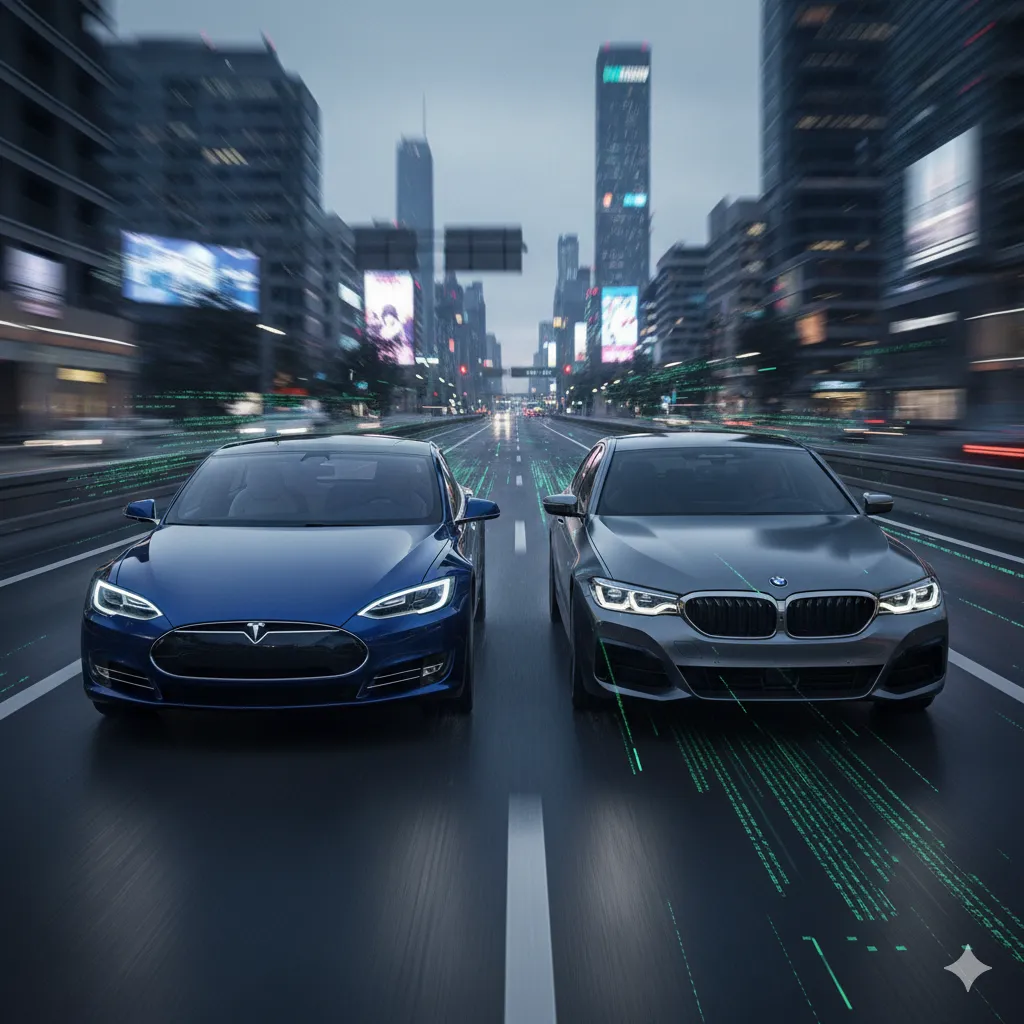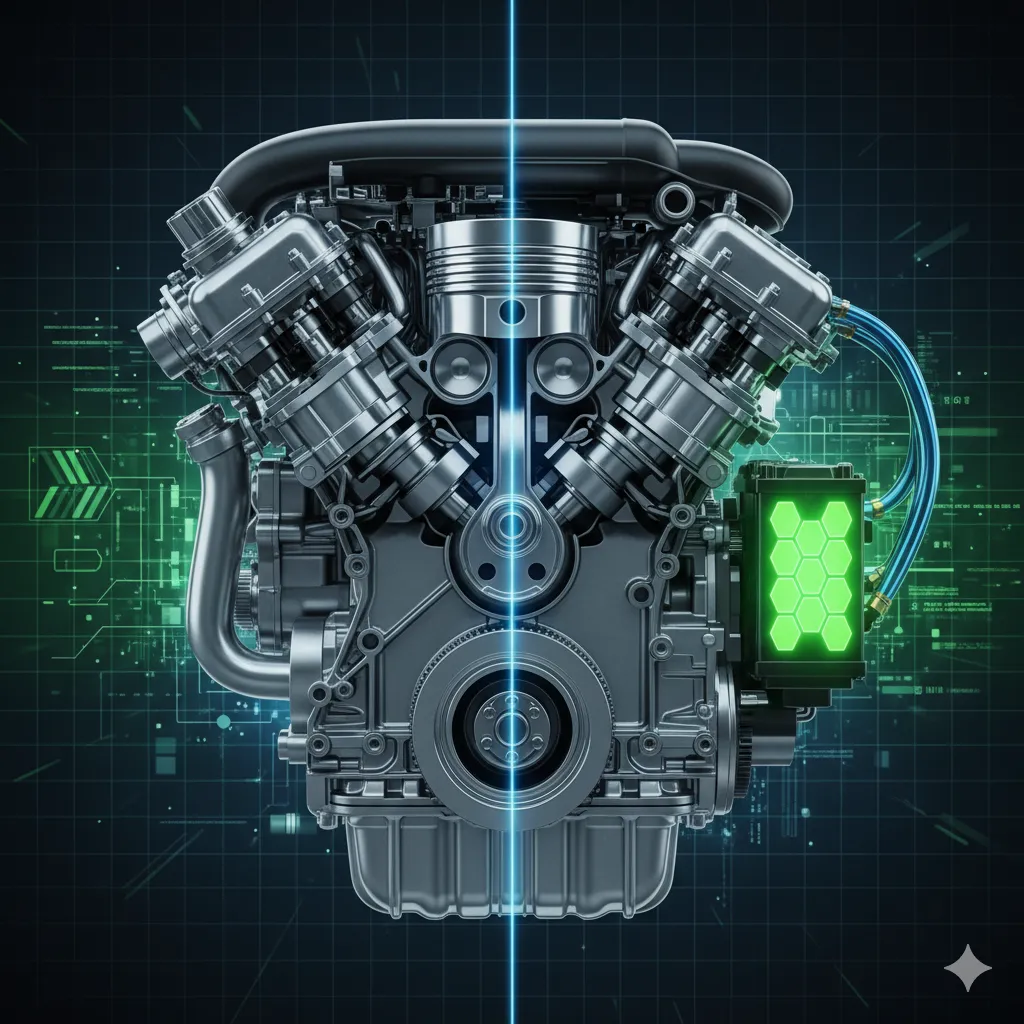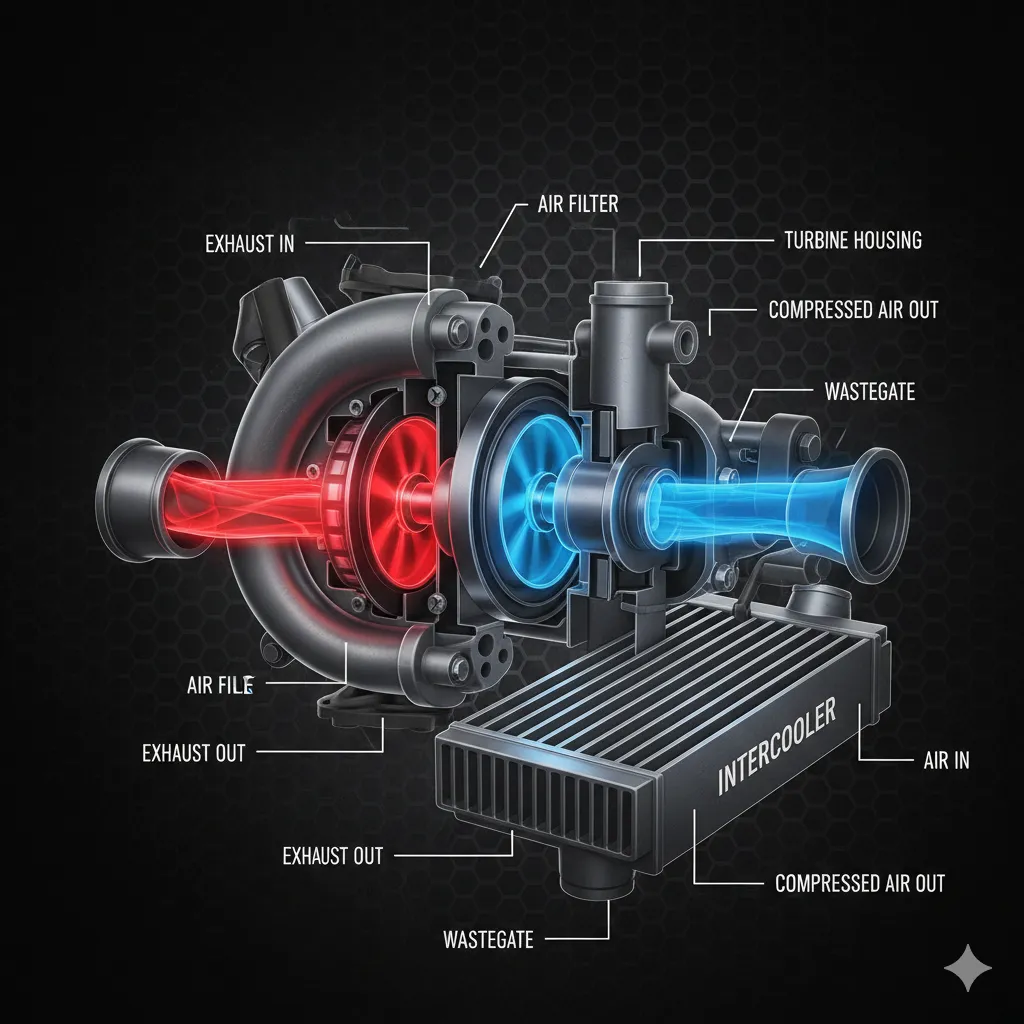
Tesla vs. BMW: Best EV Tech Compared
⚡ The Ultimate EV Tech Face-Off: Tesla vs. BMW
The electric vehicle (EV) market is a high-voltage battleground, and two titans stand out: Tesla—the disruptive, tech-first pioneer—and BMW—the established luxury giant transitioning to electric. Choosing between them isn't just about picking a car; it's about opting for a philosophy. Do you prefer the minimalist, software-driven experience of a Tesla, or the luxurious, driver-focused engineering of a BMW?
This comprehensive guide dives deep into the core technologies that define these brands’ electric offerings. We’ll be comparing key areas like driving automation, range and charging, and the all-important in-car experience to help you decide which electric champion truly leads the charge.
Tesla’s Digital-First Approach vs. BMW’s Refined Engineering
Tesla and BMW come from fundamentally different starting points, and it shows in their electric vehicles.
Tesla’s strength lies in its integrated software, over-the-air updates (OTA), and proprietary Supercharger network. They build the car around the tech, prioritizing a seamless, digital experience. This is what makes a Tesla feel more like a gadget on wheels than a traditional car.
BMW, leveraging over a century of automotive mastery, delivers an EV that feels like a classic luxury sedan or SUV—just with an electric powertrain. Their focus is on premium materials, superior build quality, and a finely-tuned driving dynamic. Their technology is integrated to assist the driver, not redefine the entire cabin experience.
🛣️ Autonomy and Driver Assistance Systems
This is arguably the most contentious category in the Tesla vs. BMW EV tech debate. Both brands offer robust systems, but their execution and philosophy differ vastly.
Tesla Autopilot and Full Self-Driving (FSD)
Tesla's system, branded as Autopilot (standard features like adaptive cruise control and autosteer) and the optional Full Self-Driving (FSD) capability, is built on a "vision-only" platform, relying heavily on cameras and neural networks.
-
Autopilot: Generally praised for its smoothness in highway driving and its ability to handle acceleration and deceleration gracefully.
-
FSD (Beta): This is where Tesla aims to be truly revolutionary, with capabilities like navigating on city streets, automatic lane changes, and turning—features that currently position it at the forefront of attempted full autonomy. However, it still requires constant driver supervision and has been criticized for occasional "phantom braking" and unpredictable behavior.
BMW Driving Assistant Systems
BMW offers a suite of advanced driver-assistance systems (ADAS), often packaged as Driving Assistant Professional. Their approach is more traditional and safety-focused, integrating a mix of cameras, radar, and in some cases, ultrasonic sensors.
-
Hands-Free Driving: BMW has implemented true Level 3 autonomous driving in certain models (like the 7 Series/i7), allowing for hands-off driving at lower speeds (up to a certain limit, often 40-85 mph) in specific conditions, which Tesla currently cannot legally or technically match in the same way. The system uses a driver-facing camera to ensure the driver is ready to take over.
-
Predictability and Reliability: BMW's systems are often described as more predictable and confident in their actions, making fewer "adventurous" maneuvers than FSD beta.
| Feature | Tesla Autopilot/FSD | BMW Driving Assistant Pro |
| Hardware | Vision-only (Cameras) | Cameras, Radar, Ultrasonic Sensors |
| Driver Input | Hands-on required (torque sensor) | Hands-free capable in specific conditions (driver attention camera) |
| Strengths | Seamless highway navigation, constant OTA updates for new features. | Predictable behavior, high-speed assistance, available Level 3 tech (in select models). |
🔋 Range, Efficiency, and Charging Network
When evaluating Tesla vs. BMW EV tech for daily usability, range and charging are paramount.
Range and Efficiency
Tesla has long been the segment leader in battery efficiency, which translates to competitive ranges even with smaller battery packs. Models like the Model 3 Long Range frequently boast an EPA-estimated range over 300 miles.
BMW's newer EVs, such as the i4 and iX, have closed the gap, offering very competitive range figures (often 270–310+ miles depending on the model and trim), reflecting their commitment to optimizing their electric platforms. BMW's expertise in powertrain efficiency is now being applied to the electric domain.
Charging Infrastructure: Supercharger vs. CCS
This is perhaps Tesla’s greatest current advantage.
-
Tesla's Supercharger Network: A vast, reliable, and entirely seamless charging experience. You plug in, and the car automatically handles the payment and authenticates—no apps or cards needed. This proprietary network is a massive selling point for Tesla owners.
-
BMW's CCS Standard: BMW uses the CCS (Combined Charging System) connector, the global standard for fast charging. While this gives BMW owners access to a wider variety of third-party networks (Electrify America, EVgo, etc.), the experience is often less smooth, requiring multiple apps and potential compatibility issues. However, with Tesla opening up its network (NACS standard) to other automakers, this gap is rapidly narrowing.
🖥️ Infotainment and Interior Experience
The cockpit experience is where the philosophical difference between the two brands is most stark.
Tesla's Minimalist Cockpit
In a Tesla, the vast majority of vehicle functions—from setting the wipers to adjusting the side mirrors—are controlled via a single, massive touchscreen (15 inches in the Model 3/Y).
-
Pros: Futuristic, clean aesthetic, excellent responsiveness, and constantly updated with new features and streaming services.
-
Cons: The lack of physical controls can be distracting for basic functions, and there is no native Apple CarPlay or Android Auto integration.
BMW's iDrive and Luxurious Cabin
BMW maintains its luxury heritage, focusing on high-quality materials, a quieter ride, and a traditional, driver-centric cockpit. Their latest system, iDrive 8 (or newer versions), is a dual-screen setup (instrument cluster and central display) with a crucial difference: the iDrive controller dial.
-
Pros: Superior build quality, comfortable seating, tactile controls for climate and media, and standard wireless Apple CarPlay and Android Auto. The iDrive controller allows for non-touchscreen input, which is safer while driving.
-
Cons: More complex menu structure than Tesla's, can feel less cutting-edge than the ultra-minimalist Tesla screen.
❓ FAQs on Tesla and BMW EV Technology
1. Which brand offers better interior quality?
BMW is widely regarded as offering a superior interior experience. They use premium materials, have better sound dampening, and maintain a traditional luxury finish that Tesla’s minimalist, synthetic interior cannot match.
2. Is Tesla FSD truly a self-driving car?
No. Despite the name "Full Self-Driving," it is a Level 2 driver assistance system that requires the driver to be attentive and ready to take control at all times. It is not an autonomous vehicle. BMW's Level 3 system is closer to true autonomy, but its use is restricted to specific low-speed highway conditions.
3. Which charging standard is better?
Currently, Tesla's Supercharger network offers a more reliable and seamless charging experience. However, the industry is moving toward a standard where the Tesla (NACS) connector will be available on non-Tesla vehicles, meaning future BMWs will be able to access the Supercharger network, evening the playing field. BMW currently uses the CCS standard.
4. Which is faster: a Tesla or a BMW EV?
While both offer exhilarating performance, top-tier Tesla models like the Model S Plaid still hold the edge in raw, straight-line acceleration (e.g., 0-60 mph in under 2 seconds). However, performance BMW M models (like the i4 M50 or i5 M60) are praised for their superior handling, steering, and traditional driving dynamics that feel more engaging on a winding road.
✅ Conclusion: Which EV Tech Champion Wins?
The answer to which brand has the "best" EV tech is a classic case of personal priorities.
-
Choose Tesla if your priority is a bleeding-edge digital experience, the most advanced (though still supervised) autonomous driving features, and seamless access to a dedicated charging network. Tesla excels as a tech company that builds a car around its software.
-
Choose BMW if your priority is classic luxury, superior build quality, exceptional driving dynamics, and a more driver-centric cockpit with tactile controls and seamless smartphone integration (CarPlay/Android Auto). BMW excels as an automaker that has successfully electrified its luxury vehicles.
Both brands are pushing the boundaries of electric mobility, but for now, Tesla holds the tech lead in pure software features and charging network, while BMW dominates in luxury, build quality, and a refined driving feel.
External Links
-
U.S. Department of Energy Alternative Fuels Data Center (Authoritative source for EV charging standards and infrastructure data)
-
National Highway Traffic Safety Administration (NHTSA) (Authoritative source for vehicle safety and autonomy regulations)
-
Official BMW Electric Vehicles Page (For BMW's official EV specs and lineup)




